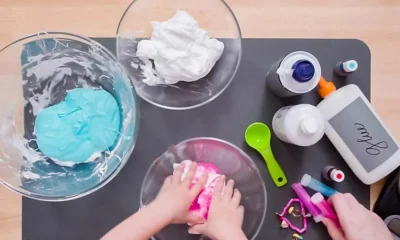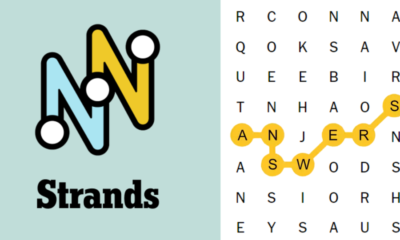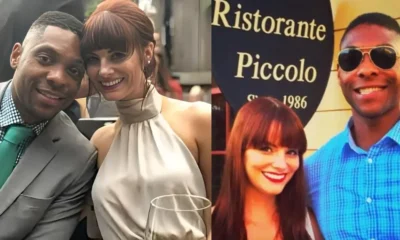Education
10 Tablespoons to Cups Conversion Guide for Easy Cooking

10 Tablespoons to Cups: A Complete Conversion Guide
Cooking and baking are arts that require both creativity and precision. While adding a pinch of spice or a dash of flavor may not need strict measurement, ingredients like flour, sugar, or oil often demand exact amounts. This is where conversions like 10 tablespoons to cups become essential. Whether you are following a recipe, scaling portions, or simply trying to understand the math behind measurements, knowing how to accurately convert tablespoons into cups saves time, effort, and mistakes in the kitchen.
In this guide, we’ll break down the conversion, provide practical examples, share tips for accurate measurement, and explore why knowing these conversions makes you a more confident cook or baker.
Understanding Tablespoons and Cups
Before diving into the exact conversion, let’s establish what these units represent.
-
Tablespoon (tbsp): A common kitchen measurement, especially in U.S. cooking. It equals 1/16 of a cup. One tablespoon is also equal to 3 teaspoons.
-
Cup: A standard unit of measurement often used in baking and liquid measurements. In U.S. measurements, 1 cup equals 16 tablespoons.
This means that tablespoons and cups are directly related, making conversions straightforward once you know the base numbers.
How to Convert 10 Tablespoons to Cups
The key to converting tablespoons into cups is remembering the basic formula:
1 cup = 16 tablespoons
To find out how many cups are in 10 tablespoons, simply divide 10 by 16:
10 ÷ 16 = 0.625
So, 10 tablespoons = 0.625 cups.
In other words, if a recipe calls for 10 tablespoons, you can measure out just over half a cup (precisely 5/8 cup).
Visualizing the Conversion
Sometimes, numbers can feel abstract. Let’s break down what 0.625 cups looks like in practical terms:
-
Half a cup (0.5 cups) = 8 tablespoons
-
Two more tablespoons = 2 tablespoons
-
Add them together = 10 tablespoons, which equals 0.625 cups.
So, whenever you see 10 tablespoons in a recipe, you can measure half a cup plus 2 tablespoons for accuracy.
Why Accurate Conversions Matter
At first glance, you might wonder why it matters if you use a little more or less. The truth is:
-
In baking: Precision is critical. Too much flour or sugar can change texture, density, and flavor.
-
In cooking: Measurements can affect taste balance, especially with spices, oils, and sauces.
-
In scaling recipes: If you double or halve a recipe, small inaccuracies multiply and lead to big changes.
Knowing conversions like 10 tablespoons to cups ensures consistency, accuracy, and professional results, whether you’re cooking at home or preparing for guests.
Practical Kitchen Examples
Here are some real-world scenarios where converting tablespoons to cups comes in handy:
-
Baking a Cake
A recipe might call for 10 tablespoons of butter. Instead of scooping butter 10 times, you could measure out 0.625 cups—faster and more convenient. -
Making Sauces
If your sauce recipe asks for 10 tablespoons of cream, measuring slightly more than half a cup is much easier than counting spoonfuls. -
Portion Adjustments
When scaling a recipe up or down, converting between tablespoons and cups saves time and keeps your ratios accurate.
Other Helpful Conversions
Understanding 10 tablespoons to cups is useful, but other conversions often come up in everyday cooking:
-
1 tablespoon = 0.0625 cups
-
2 tablespoons = 0.125 cups (⅛ cup)
-
4 tablespoons = 0.25 cups (¼ cup)
-
8 tablespoons = 0.5 cups (½ cup)
-
12 tablespoons = 0.75 cups (¾ cup)
-
16 tablespoons = 1 cup
These conversions make it easier to adjust recipes, substitute ingredients, or scale portions up or down.
Tips for Accurate Measuring
Getting the right conversion is one part of the equation; measuring correctly is another. Here are a few tips:
-
Use proper tools: Always use standardized measuring cups and spoons rather than random household spoons.
-
Level off dry ingredients: Use a flat edge (like a knife) to remove excess flour or sugar for accuracy.
-
Check liquid measurements at eye level: When measuring liquids, place the cup on a flat surface and check at eye level for precision.
-
Avoid packing unless stated: Ingredients like flour should not be packed unless the recipe specifically says so.
Following these habits will give you consistent results, especially when dealing with recipes that require precision.
10 Tablespoons to Cups in Metric Measurements
For those working with metric units, the conversion is also helpful:
-
1 U.S. tablespoon = 14.79 milliliters (ml)
-
10 tablespoons = 147.9 ml
-
0.625 U.S. cups = about 148 ml
This makes it easier for international cooks who prefer working in milliliters rather than U.S. measurements.
Common Misconceptions in Measuring
Many cooks make small mistakes when converting measurements, which can affect results:
-
Confusing tablespoons with teaspoons
Since 1 tablespoon equals 3 teaspoons, mixing them up can throw off a recipe dramatically. -
Using different regional measurements
In the U.K., Australia, and Canada, tablespoon sizes can vary slightly (15 ml vs. 20 ml), which changes the conversion. Always confirm which standard your recipe uses. -
Eyeballing ingredients
While eyeballing might work for certain dishes, precise recipes like baked goods require exact measurements.
Being mindful of these pitfalls ensures your conversions are spot on.
Why Learn Conversions Instead of Guessing?
Some might think using rough estimates is enough. But by learning conversions like 10 tablespoons to cups, you:
-
Save time in the kitchen
-
Minimize waste by measuring accurately
-
Gain confidence in tackling new recipes
-
Improve consistency in taste and texture
Once you understand how to convert, you’ll find it easier to adapt recipes and even create your own.
Final Thoughts
Cooking is a blend of creativity and science, and measurement is the backbone that ensures your creations turn out just right. Knowing that 10 tablespoons to cups equals 0.625 cups gives you the confidence to cook and bake with precision. Whether you’re making a sauce, baking bread, or experimenting with new dishes, mastering these conversions is a small step that makes a big difference in your kitchen skills.
So next time you see 10 tablespoons in a recipe, you’ll know exactly what it means: just over half a cup. With this knowledge, you’re better prepared to measure, mix, and master every recipe that comes your way.

-

 Nature4 months ago
Nature4 months agoFascinating World of Facts: A Journey Through Datos Curiosos
-

 Lifestyle5 months ago
Lifestyle5 months agoHow to Make Slime: The Ultimate DIY Guide for Kids and Adults
-

 Entertainment5 months ago
Entertainment5 months agoUnderstanding Basketball Zero Codes: A Complete Guide
-

 Business3 months ago
Business3 months agoWho Is Alex Karp Wife? Private Life of Palantir CEO
-

 Entertainment5 months ago
Entertainment5 months agoStrands NYT: Unraveling the Digital Threads of a New Online Trend
-

 Celebrity4 months ago
Celebrity4 months agoWho Is Drew Pritchard New Wife? Inside the Antique Star’s Private Love Life
-

 Business3 months ago
Business3 months agoRahki Giovanni Net Worth: Income, Fitness, and Success
-

 Celebrity3 months ago
Celebrity3 months agoMelanie Zanona Salary, Career Growth & Net Worth Revealed


